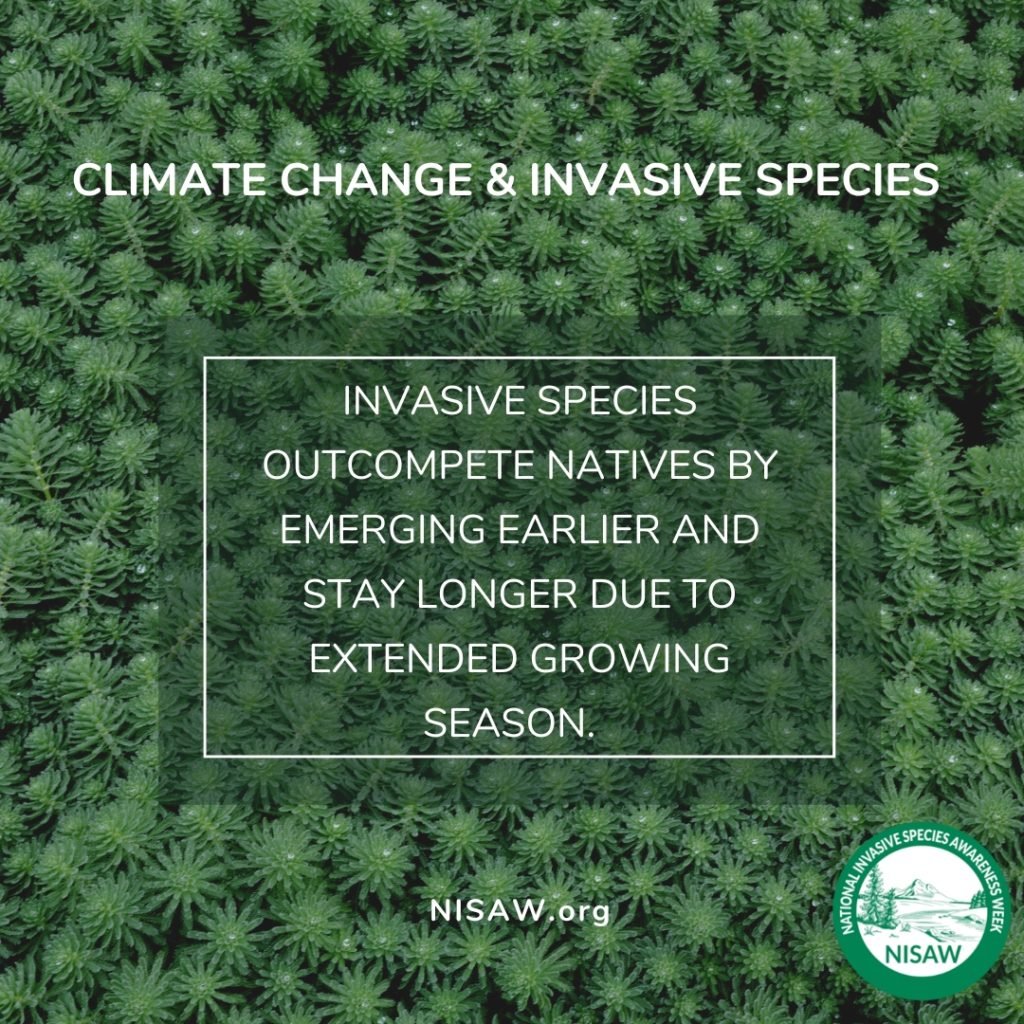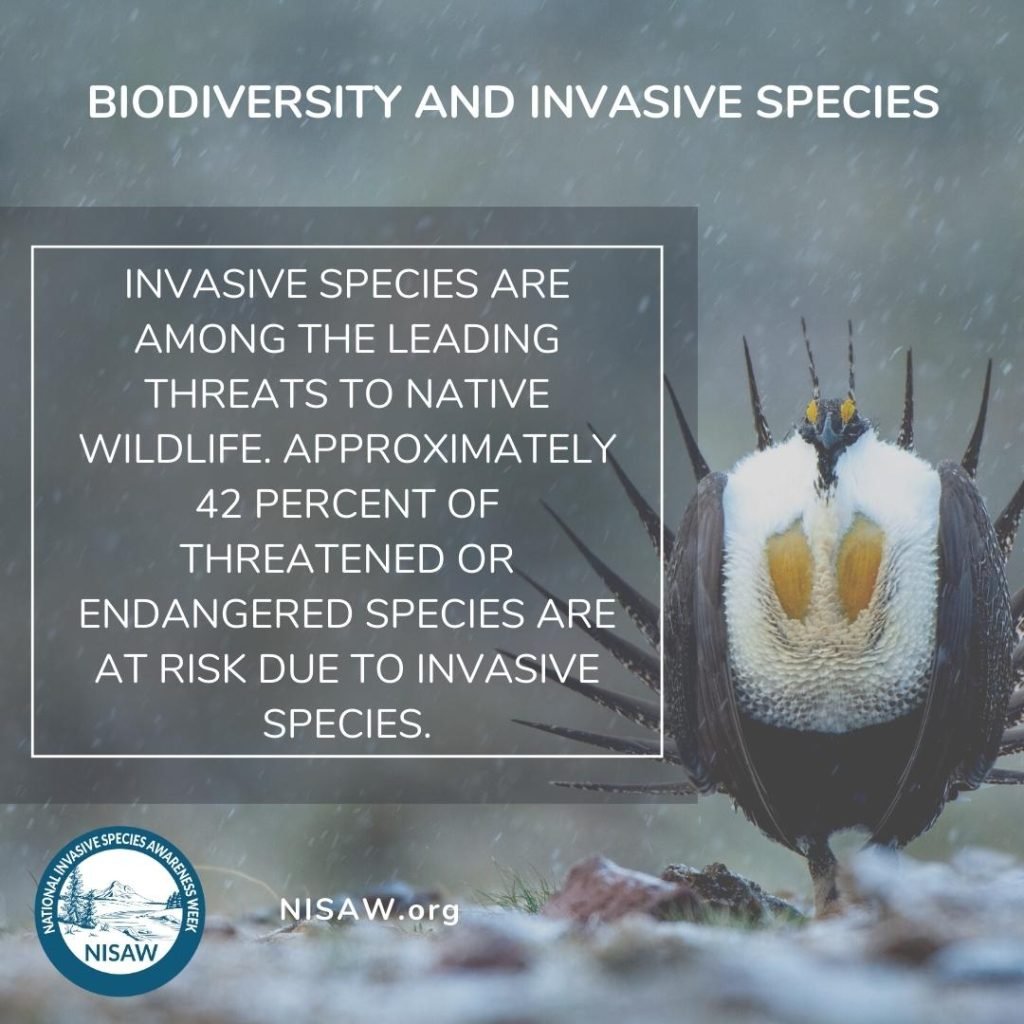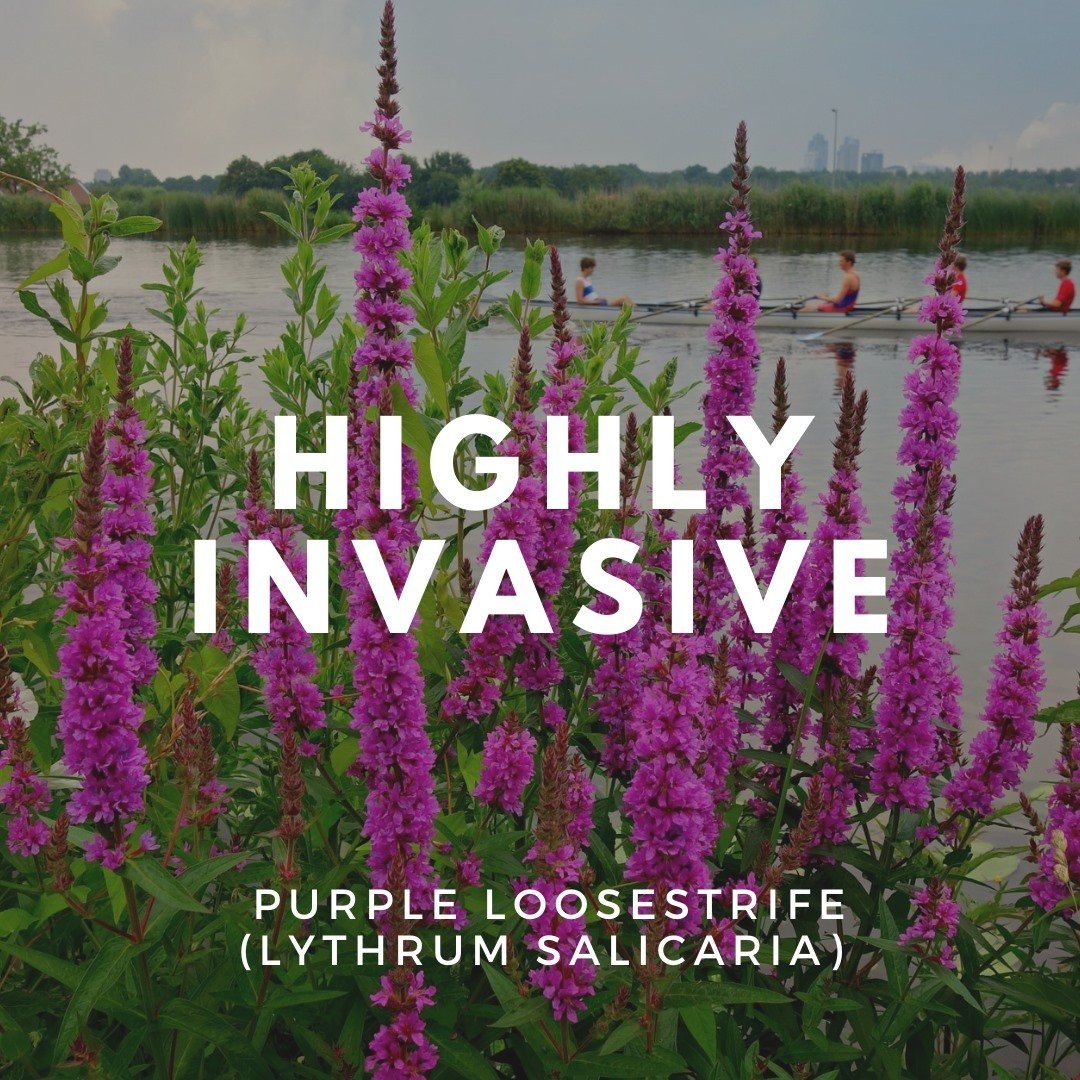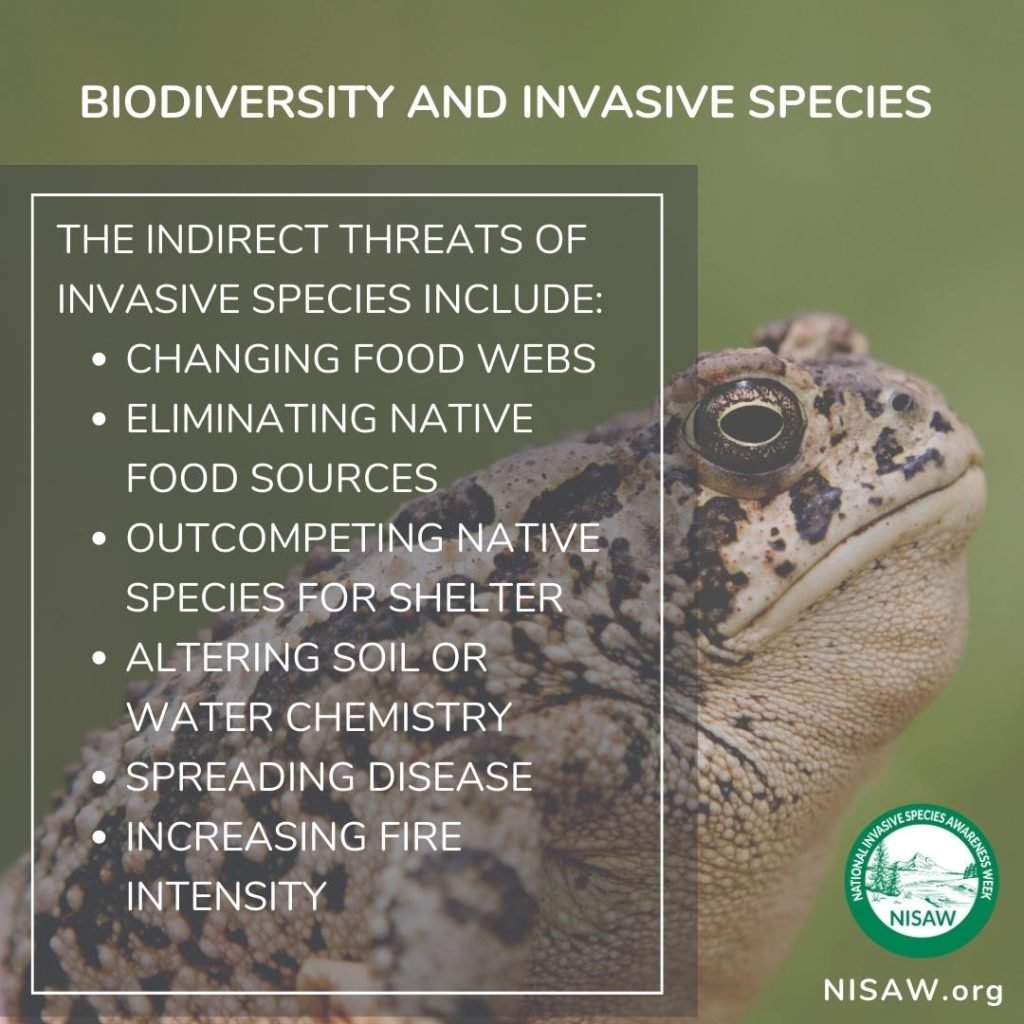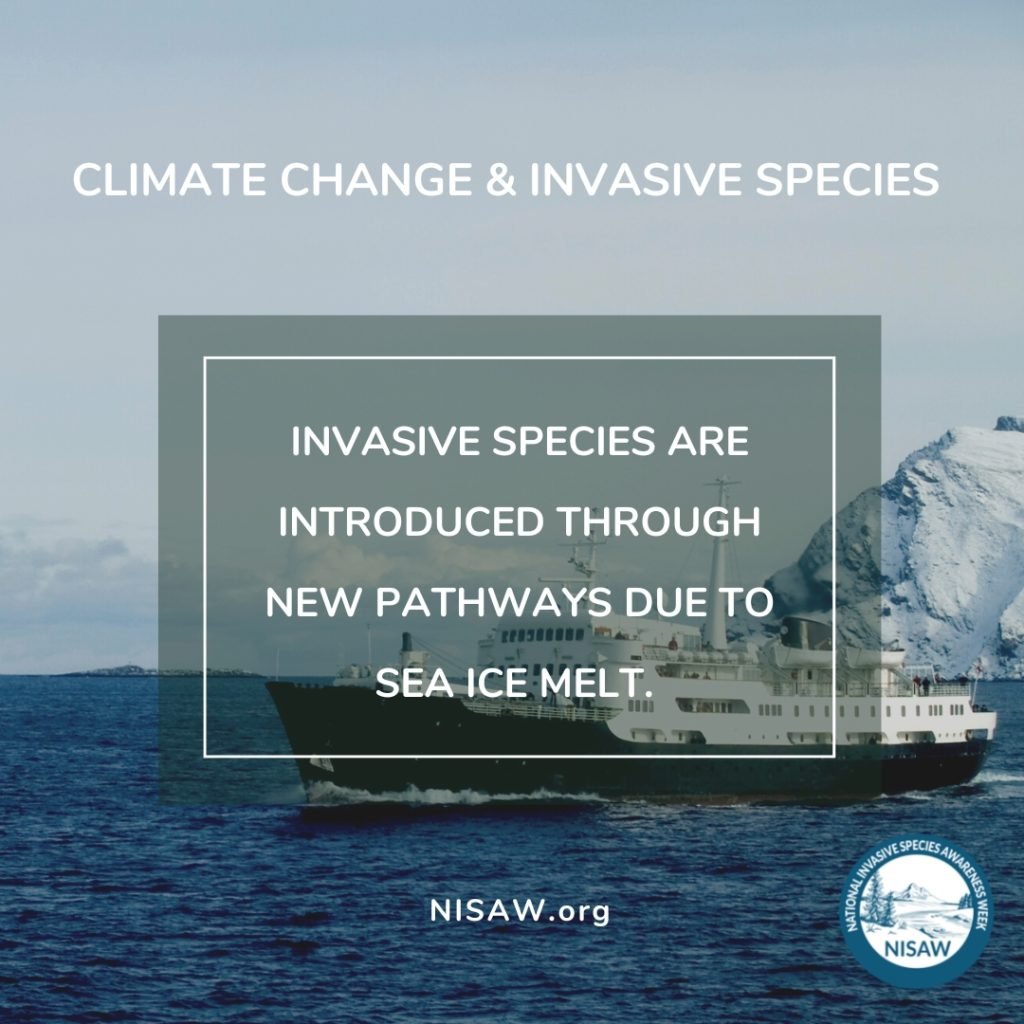Stop the Spread of Invasive Species…
Hello friends! Did you know it’s National Invasive Species Awareness Week?
That’s right, February 20-25 is a week dedicated to raising awareness about invasive species, their threat, and what can be done to prevent their spread.
AND YOU can help STOP the SPREAD of invasive plants and other invasive species!
Here’s 5 ways to join the fight against invasive species!
#1 don’t bring invasive species home to your garden…
So many invasive plant species are introduced simply by bringing them home to our gardens. There we nurture them for growth & flowers with everything they need to become strong plants in the garden.
But buying & pampering invasive plants has a very dark side…
Invasive species like Purple Loosestrife and Butterfly Bush spread out of our gardens uncontrolled by the predators who evolved with them to keep these species in check.
Once gone rogue, they disturb the natural ecosystem by displacing native plant species as well as native pollinators and other wildlife who depend on native plants for food & shelter. Further invasive species negatively impact crop fields and waterways sometimes requiring the use of harmful herbicides to destroy them!
You don’t want to hurt your local farmers or habitats with invasive species….
Of course you don’t! So…
What are the BIG 3?
When you are out plant shopping ask yourself these 3 questions:
Is the plant NATIVE to my region?
Buying native plants for YOUR region supports the biodiversity of plants and the wildlife that depend on native plants to thrive & survive!
This means more native pollinators and improved pollination of vital crops like apples.
Invasive species displace native species quickly reducing biodiversity AND pollination!
And yes this includes YOU!
No pollinators = no food for you!
Is it FOUND on the Invasive Species List?
Needless to say, if you get your plants from our farm or other local native plant nurseries you won’t have to ask this one!
APPS are wonderful for quick & easy plant identification of both native & invasive species! Before you bring that pretty plant home scan it in BugwoodApps
WHERE & WHO grew the plant?
Think about how far the plant has traveled to get into the big box store or nursery. ASK staff where the plants are sourced, are they grown from seed/cuttings at that location…
Make sure they are sourced from licensed nurseries or grown from seed at that location. If they can’t tell you where the plant is from simply DON’T buy it.
Why not?
Invasive species of insects, seeds, and disease travel in soils and plants like the horrible success of Asian Jumping Worms and Spotted Lantern Fly !
#2 LEARN about Invasive Species
Become a citizen scientist with local organizations or learn about how to stop the spread of invasive species in your area.
Our favorite local resource is SLELO PRISM. Since 2011, this organization has combated the spread of invasive species to protect natural habitats, biodiversity, natural areas, and freshwater resources within a 7,600 square mile region from Oswego County to the St.Lawrence region.
You can find your local PRISM organization HERE or use their videos/guides HERE
And you can VOLUNTEER with SLELO PRISM!
Another GREAT RESOURCE for citizen scientists is the Native Plant Trust’s GO BOTANY APP
But wait… there’s so much more to discover!
#3 Identify Invasive Species
Identifying & reporting the invasive species you find is easy with mobile apps!
Our favorite is BUGWOODAPPS for fast identification, tracking and removal tips.
When you identify an invasive species don’t forget to REPORT it in the app so researchers can track its location, progress and hopefully DECLINE!
Also look up & learn how to remove that particular species. Different species will require different eradication/collection methods. We carry an invasive species/trash kit on hikes. The kit has black plastic bags, twine, disposable gloves, & special clippers that are bleached after every collection.
#4 Find Connections
They say ‘no man is an island’ but if you were you’d want friends to help keep the invasive species off it right?
Join your local WILD ONES CHAPTER for special events and programs about native plants and invasive species for your area.
Here in Central New York, our local chapter offers incredible learning and community opportunities~ Habitat Gardening in CNY
#5 Jump into the fray!
Volunteer with local organizations to combat invasive species like SLELO PRISM
Attend local events such as CCE Oswego County’s Hike to Protect Hemlocks to learn & share about invasive species in our area.
And you can meet me and others committed to stopping the spread of invasive species this June!
We’ll be at the Eastern Lake Ontario Invasive Species Symposium! Registration is FREE and the event is held June 22nd at the beautiful Tailwater Lodge in Pulaski.
What invasive plants & other species have you found in your area or gardens? Share below how you found them and how you are getting rid of them to protect native habitats!

